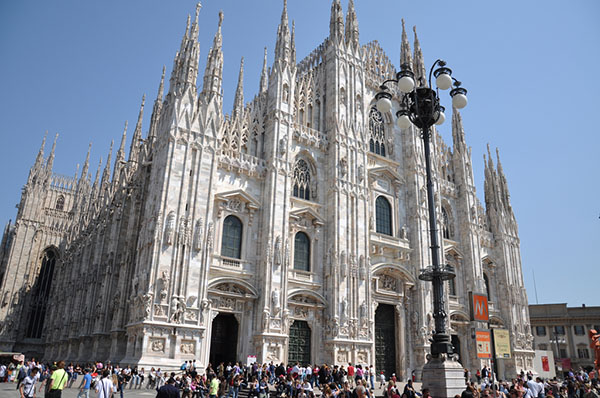EVOLUTION OF GOTHIC ARCHITECTURE
Gothic architecture is an architectural style that originated in France in the 12th century and spread throughout Europe, lasting until the 16th century. This style is characterized by its ornate and complex design, with pointed arches, ribbed vaults, and intricate stone tracery.
The origins of Gothic architecture can be traced back to the Romanesque style, which dominated European architecture from the 9th to the 12th century. Romanesque architecture was characterized by its round arches, thick walls, and small windows. However, as builders became more skilled and daring, they began to experiment with new techniques and styles.
The first Gothic buildings were built in France in the mid-12th century, with the construction of the abbey church of Saint-Denis near Paris. This church was designed by Abbot Suger, who sought to create a new style of architecture that was more expressive and uplifting than the Romanesque style.
One of the key features of Gothic architecture was the pointed arch, which allowed for greater height and more open space than the round arches of the Romanesque style. Gothic architects also used ribbed vaults, which allowed for greater structural stability and the ability to create intricate designs in stone.
Another important feature of Gothic architecture was the use of flying buttresses, which were used to support the weight of the vaulted ceilings and walls. These buttresses allowed for thinner walls and larger windows, which allowed more light to enter the building.
Gothic architecture was not just limited to churches and cathedrals, but was also used in secular buildings such as castles and town halls. The style spread throughout Europe, with each region adding its own unique touches and adaptations.
In the late Gothic period, architects began to experiment with new forms and decorations, leading to the development of the flamboyant Gothic style. This style was characterized by its extravagant ornamentation, including intricate stone tracery, pinnacles, and spires.
By the 16th century, the popularity of Gothic architecture began to wane, as builders began to adopt the Renaissance style, which was based on classical forms and motifs. However, the legacy of Gothic architecture can still be seen in many of Europe’s most famous landmarks, including Notre Dame Cathedral in Paris, Westminster Abbey in London, and the Duomo in Milan.
In conclusion, Gothic architecture was a revolutionary style that marked a departure from the Romanesque style that preceded it. Its use of pointed arches, ribbed vaults, and flying buttresses allowed for greater height, more open space, and intricate design. While its popularity declined in the 16th century, the legacy of Gothic architecture can still be seen in some of Europe’s most iconic buildings.
Here are some key points to remember about the evolution of Gothic architecture:
- Gothic architecture originated in France in the mid-12th century, with the construction of the abbey church of Saint-Denis.
- Gothic architecture was characterized by its pointed arches, ribbed vaults, and flying buttresses, which allowed for greater height, more open space, and intricate design.
- The style spread throughout Europe, with each region adding its own unique touches and adaptations.
- In the late Gothic period, architects began to experiment with new forms and decorations, leading to the development of the flamboyant Gothic style.
- By the 16th century, the popularity of Gothic architecture began to wane, as builders began to adopt the Renaissance style, which was based on classical forms and motifs.
- The legacy of Gothic architecture can still be seen in many of Europe’s most famous landmarks, including Notre Dame Cathedral in Paris, Westminster Abbey in London, and the Duomo in Milan.


